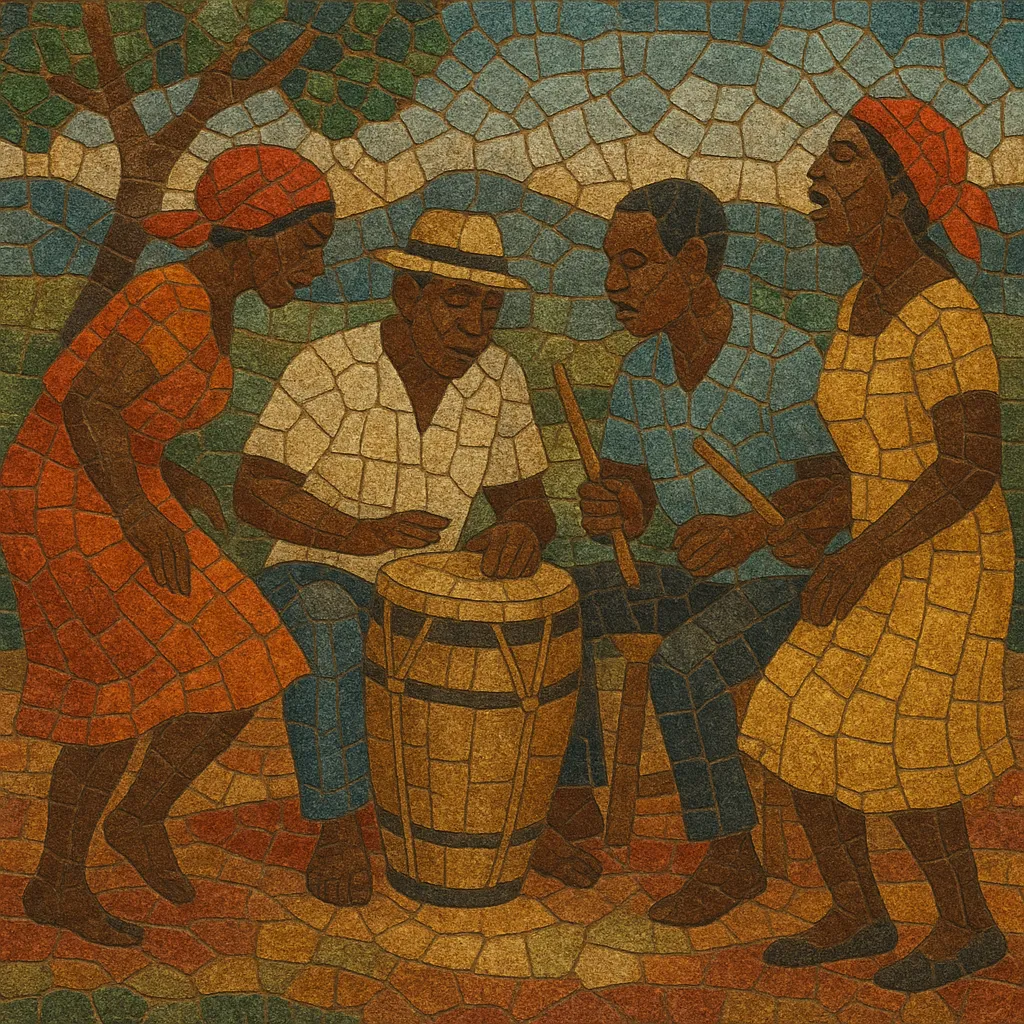Bélé (often written bèlè in Martinique) is a traditional Afro‑Creole music-and-dance form from the Lesser Antilles, especially Martinique and neighboring islands. It centers on a dialogue between a lead drum (tanbou bèlè), a timeline pattern played on tibwa (bamboo sticks struck on the drum’s shell or a piece of wood), and call‑and‑response singing in Creole.
The style is social and participatory: singers, dancers, and drummers form a circle, and the dancer’s steps actively cue the drummer’s accents and improvisations. Melodically it favors pentatonic or modal contours, while rhythmically it blends African polyrhythms with European couple‑dance influences inherited during the colonial era. The result is music that is simultaneously grounded, percussive, and flowing—equally at home in community fêtes, courtship dances, and cultural ceremonies.
Bélé emerged among Afro‑descendant communities in the French Caribbean during the plantation era. Enslaved and later emancipated Afro‑Creole populations fused West and Central African drumming, circular dance practices, and call‑and‑response singing with European social‑dance forms that circulated through colonial society (e.g., contredanse, mazurka, and polka). The core ensemble—tanbou bèlè with tibwa—crystallized in rural settings where music accompanied work, religious gatherings, courtship, and communal festivities.
Historically, bélé gatherings took place in a circle. A lead singer (chantè/chantwèl) intones verses in Creole, the group responds, and dancers enter the ring. The dancer’s footwork, torso movement, and approach/retreat gestures cue the drummer, who sits on the drum and uses hands (and sometimes heel pressure) to shape pitch and timbre. The tibwa timeline provides the unbroken rhythmic spine, creating a lattice for polyrhythmic play and dancer–drummer conversation.
Urbanization, the spread of recorded dance music, and shifting social norms reduced everyday rural bélé practice in the mid‑20th century. Yet culture‑bearers maintained the tradition in community groups, religious contexts (notably the bèlè lègliz current), and cultural festivals. Musicians also began referencing bélé in new popular styles and stage presentations.
From the late 20th century onward, educators, ensembles, and cultural activists in Martinique, Dominica, and Tobago revitalized bélé via workshops, schools, and heritage festivals. Contemporary artists integrated bélé rhythms, tibwa timelines, and vocal phrasing into modern Caribbean genres and fusion projects. The bélé aesthetic—its cyclical groove, call‑and‑response, and dancer–drummer dialogue—helped seed later Antillean popular styles and informs today’s roots‑oriented performances.


